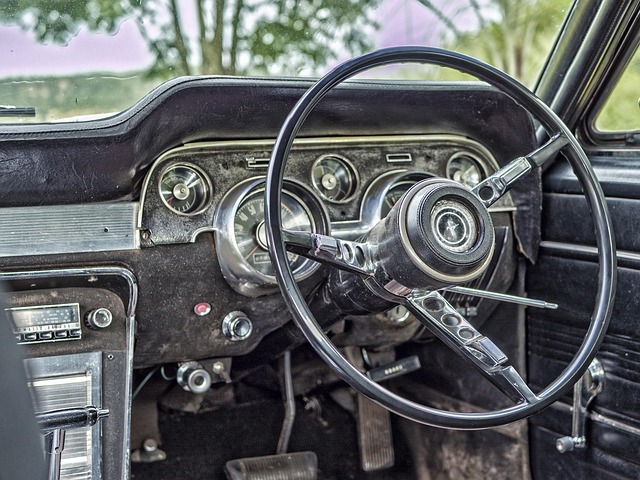Looking to register your car in California? This comprehensive guide breaks down the process step-by-step. From understanding the requirements to gathering essential documents, you’ll learn how to navigate the California Vehicle Registration Process smoothly. A key part is performing a DMV VIN verification, ensuring your vehicle’s history is clean. Once ready, fill out the registration application accurately and pay the fees for prompt plate issuance.
- Understanding the California Vehicle Registration Process
- Gather Necessary Documents for Car Registration
- Perform DMV VIN Verification: Steps and Requirements
- Complete the Registration Application Form Accurately
- Pay the Registration Fees and Receive Your Plate
Understanding the California Vehicle Registration Process

In California, registering a car involves several key steps that ensure vehicle safety and compliance with state regulations. The process begins with a comprehensive DMV (Department of Motor Vehicles) vin verification, which checks the Vehicle Identification Number (VIN) to ensure the car’s history aligns with its intended use. This step is crucial for identifying any potential issues or discrepancies related to ownership, accident damage, or outstanding recalls.
A mobile vin verifier can facilitate this process by offering a convenient, on-site inspection service. This alternative to traditional DMV procedures allows you to conduct the VIN inspection at your preferred location, saving time and effort. Once the vin verification is complete and any necessary documentation is in order, the California DMV will issue the registration certificate, officially recognizing your vehicle as compliant with state standards.
Gather Necessary Documents for Car Registration

Before heading to the California Department of Motor Vehicles (DMV) to register your car, make sure you have all the required documents. The process typically involves several key pieces of information and verification steps. First, gather your vehicle’s registration certificate from its previous owner, along with any proof of insurance and a valid driver’s license. For out-of-state vehicles, a title transfer may also be necessary.
Additionally, you’ll need to undergo a DMV vin verification process, which includes providing the vehicle identification number (VIN) for inspection. Using a mobile vin verifier can streamline this step by allowing you to conduct the VIN inspection remotely before visiting the DMV. This ensures a smoother registration process as it confirms your vehicle’s history and authenticity, aligning with California’s stringent regulations.
Perform DMV VIN Verification: Steps and Requirements

Before registering your car in California, performing a DMV VIN (Vehicle Identification Number) verification is a crucial step. This process ensures that the vehicle you’re about to register is legitimate and has not been reported as stolen or had its identity tampered with. To begin, you’ll need to gather important documents like your driver’s license, proof of insurance, and the vehicle’s registration from any previous state. Then, visit a California DMV office or use their online services to initiate the VIN verification process.
During this procedure, you’ll be required to enter your car’s unique 17-character VIN into the designated system. The DMV will then cross-reference this information against their records to confirm the vehicle’s details, history, and compliance with California’s safety standards. Once the verification is complete, successful outcomes will allow you to proceed with the registration process, including paying the required fees and acquiring a California license plate. If any discrepancies or issues are found during the VIN inspection, you may need to address them before registering your vehicle.
Complete the Registration Application Form Accurately

When registering your car in California, accuracy is key, especially on the Registration Application Form. Take your time to fill it out completely and correctly. This includes providing precise details such as your vehicle’s make, model, year, and unique identifier—the Vehicle Identification Number (VIN). A crucial step before submission is to undergo a DMV VIN verification process, ensuring your car’s history is clean and matches the information you’ve provided.
For added convenience, many individuals opt for mobile VIN verification or a mobile vin inspector. These services allow you to get real-time feedback on your vehicle’s status from the comfort of your home or even while you’re on the go. This modern approach streamlines the registration process, making it easier and faster to complete all necessary paperwork.
Pay the Registration Fees and Receive Your Plate

After completing your vehicle’s registration application, it’s time to pay the associated fees. The California Department of Motor Vehicles (DMV) charges a base fee for registration, along with additional costs based on factors like your vehicle type and age. Ensure you’re prepared with valid payment methods, such as cash, debit, or credit cards. During this process, you’ll also undergo a crucial step known as DMV VIN verification, where they cross-reference your vehicle’s unique identification number (VIN) to ensure it matches the details in their records.
Once all fees are settled, and your VIN inspection is successfully completed, you’ll receive your personalized license plate. This involves an additional fee for plate issuance. It’s a straightforward process that can often be facilitated by using mobile vin inspection services, making it more convenient for you to complete these requirements without visiting a DMV office directly.
Registering a car in California is a straightforward process that requires attention to detail. By understanding the steps, gathering the right documents, and completing each phase accurately, from VIN verification at the DMV to paying registration fees, you’ll have your vehicle registered and on the road in no time. Remember, proper documentation and adherence to procedures ensure a smooth car registration experience.
